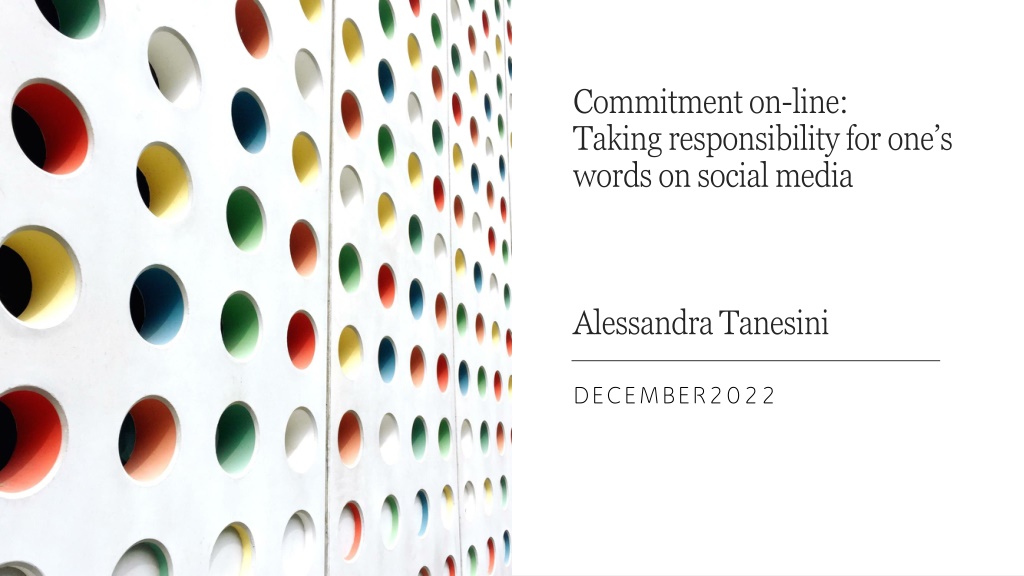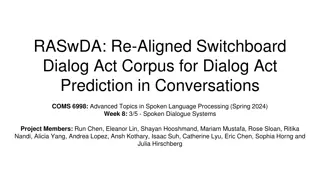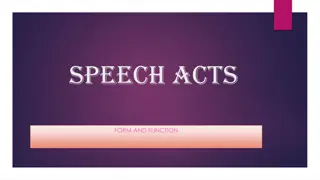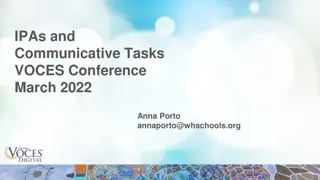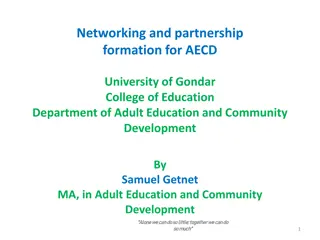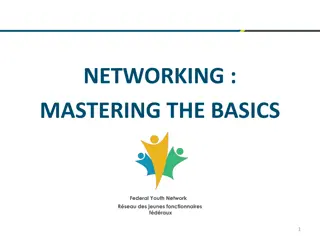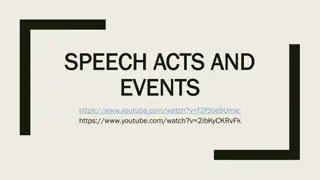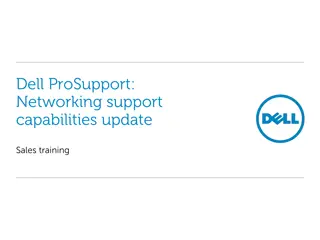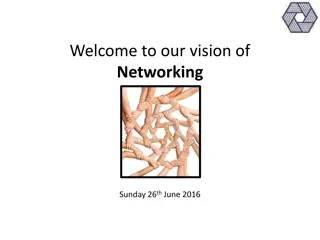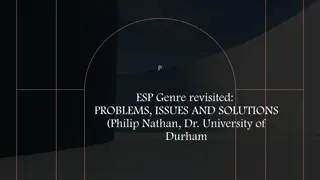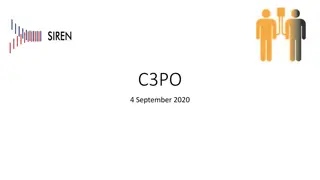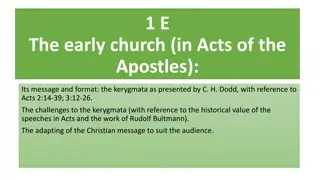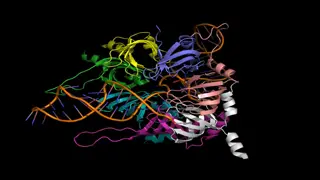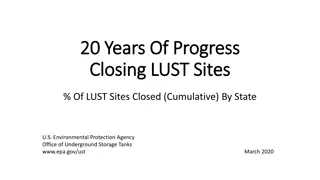Understanding Communicative Acts on Social Networking Sites
Exploring the taxonomy of communicative acts on social networking sites, this work delves into the impact of design features that influence speech acts, commitment, and normative pressures online. By analyzing common families of communicative acts on SNSs, the research sheds light on how these platforms facilitate connections but also undermine the normative effects of communication. It highlights the social and interpersonal effects of speech acts, emphasizing the commitments and reasons embedded within online interactions.
Download Presentation

Please find below an Image/Link to download the presentation.
The content on the website is provided AS IS for your information and personal use only. It may not be sold, licensed, or shared on other websites without obtaining consent from the author. Download presentation by click this link. If you encounter any issues during the download, it is possible that the publisher has removed the file from their server.
E N D
Presentation Transcript
Commitment on-line: Taking responsibility for one s words on social media Alessandra Tanesini DECEMBER2022
Aims 1. To provide a taxonomy of some common families of communicative acts on SNSs, given these platforms proximate goal to foster social connections 2. To show that the design features of SNSs tend to promote speech acts on-line that are not fully felicitous (because speakers commitments are undermined, and normative pressures on audiences are also undermined and/or defeated)
Roadmap Social networking sites (SNSs) and communicative acts: some broad features Five Families of communicative acts, how SNSs afford them, how those affordances also undermine the normative effects of the speech acts used to perform those communications Direct calls and acknowledgments (e.g., Facebook friendship invitations; likes) Emotional expressions (e.g., WhatsApp emoticons) Quotations by ostension (e.g., retweeting on Twitter) Public calls and acknowledgements (e.g., tagging on Instagram; likes -counts on Facebook) Creation of new content (e.g., posts on Facebook; new videos on TikTok; new memes on Twitter) Conclusions
SNSs: some broad features SNSs include: Twitter, Facebook, Instagram, TikTok, LinkedIn, WhatsApp. Users can construct profiles, make connections with other users, broadcast content on public channels or direct message other users (most SNSs have different channels); they can also view content posted by other users and disseminate it further (boyd, 2011). What SNSs are for? Fostering a sense of connection with other people, creating new social ties. We are sociable animals, and SNSs monetarise this. SNSs are designed to promote social bonds/connections and to keep people engaged with the platforms (the ultimate goal is to make money by advertising or selling information about users).
Communicative acts SNSs are platforms where users communicate with each other Communicative acts are what users do when they communicate with each other Communicative acts have been analysed (and individuated) in terms of their social normative effects (Kukla & Lance, 2009; Sbisa , 2002; Brandom, 1983). The normative effects of a communicative act are the effects it has on the entitlements, commitments, and reasons to do things, of speakers, audiences and perhaps by-standers (these need not be social or interpersonal) The social effects of a speech act are its interpersonal effects (which may not be normative). Examples of social normative effects include, when asserting a speaker undertakes a commitment to answer proper challenges (Brandom, 1983); when making a request a speaker gives the addressee a reason to do something namely, what they have been asked to do (Lance & Kukla, 2013).
Communicative acts Communicative acts can be felicitously performed Communicative acts can be performed in a defective manner because some of their felicity conditions are not met. (abuses) E.g., insincere assertion, welcome, etc. (Austin,1976) Communicative acts can misfire when they are not performed at all, and perhaps a different act is performed instead E.g., marriage ceremony carried out by someone lacking the requisite authority (Austin, 1976) E.g., speech act one intends and legitimately expects to be treated as order actually becomes a mere request (Kukla, 2014).
SNSs and communicative acts Communicative acts on-line include: liking, sharing a post, sharing a meme, tweeting. For example, mentioning or tagging are ways to making a public call that grabs the attention of the tagged user. Some of these communicative acts involve the use of words but many, perhaps most, do not. Instead, pictures, photos, pictograms are most frequently used. For example, a shared post on Facebook might consist of a photo without any comment but only a caption.
SNSs and communicative acts Communicative acts do not communicate exclusively by saying; communication can occur by way of expression, implication, presupposition, insinuation. For example, expresses an attitude of care in this user as elicited by the content to which they react
SNSs: communication for social networking Communication on SNSs is for creating and/or strengthening social ties Five families of communicative acts: Direct calls and acknowledgements of calls (e.g, following someone or accepting a friendship invitation) Expressions of emotional attitudes (e.g, using a reaction button, an emoticon) Ostension to, by replicating, existing content (e.g., sharing and RT) (Cf. Marsili, 2021). Public acknowledgements (e.g., likes counts) and public calls (e.g. mentions or tagging) Broadcast of new content (e.g, posting and commenting) These aims are achieved by Paying attention to each other Fostering feelings of togetherness by sharing emotions Fostering feelings of togetherness by jointly attending to the same contents Being made to feel worthy of attention
Direct Calls and Acknowledgements Examples: following and following back; liking; curating one s profile. Speech Acts used have elements of Expressives they are greetings (Searle, 1975). Vocatives they are calls (Kukla & Lance, 2009) or addresses (Goldberg, 2020) Communicative Import: Hello! (talk to me); Hi! (I see you) Normative effects: Sincerity commitment by speaker (expressive component) Speaker s commitment to cooperativeness (and warm feelings) which defeasibly entitles them to being attend to Normative pressure on hearer to acknowledge the call (vocative component) because of speaker s defeasible entitlement to being attended to Perlocutionary aim: Paying attention and/or being paid attention
Affordances for Direct Calls and Acknowledgments Platforms have features designed to promote the making of direct calls and their acknowledgments Joining a SNSs is cheap and easy (very little in the way of verification required; no joining costs) One can create a profile to make oneself visible and thus directly greeting a large audience (this too is relatively cheap in terms of effort) Inviting a friend, following, accepting an invitation, etc are quick and easy (no identification required) Direct messaging channels allow for more private communication these exist also in platforms that have public channels
Facilitating abusing direct calls and acknowledgment Undermining the sincerity commitment and promoting the abuse of direct calls The same features that facilitate the making of connections remove the costs that would deter insincere users E.g., if sending a friendship invitation on Facebook were effortful people would be less indiscriminate (and would invite only people with whom they genuinely wish to communicate) The sheer number of connections makes it nearly impossible for speakers to undertake the commitment to cooperativeness (and warm feelings) in every case These same features also make detecting insincerity hard E.g., it is very difficult to figure out whether someone inviting you is not a troll, we tend to rely on seeing which of our proper friends are their friends but this does not work if they indiscriminately accept invitations.
Facilitating abusing direct calls and acknowledgment The same features that make direct calls and their acknowledgments costly (that is, effortful) keep them honest (Donath, 2007) Undermining the normative pressure of address Insincere expressions do not generate said normative pressure Defeating the normative pressure of address (outweighing reasons) Too many callers Callers that are hard to identify because of possibility of fakery, use of pseudonymous profiles
Emotional Expressions Examples: emoticons, reaction buttons, some memes Speech acts used are expressives of emotional attitudes (Searle, 1975). Communicative Import: # @!?, oh! no.. , wow! Normative effects Sincerity commitment by speaker Speaker s commitment to the fittingness of the expressed emotion Addressee entitlements to hold speakers to account Normative (often moral) pressure on hearer to respond (this varies with the emotion expressed and might not always be present) Perlocutionary aim: sharing emotions to engender a sense of togetherness (which might be tribal)
Affordances for Emotional Expressions SNSs are designed to foster emotional expressions because humans tend to communicate relationship-relevant information by communicating emotional attitudes (L we & Parkinson, 2014; Parkinson et al., 2005). E.g., we use anger to communicate that a relationship is at risk. SNSs have features that facilitate the expression of (the same) emotional attitudes: The existence of pre-selected reaction buttons in prominent locations. The speed of communication (the need to communicate emotions is to do so at speed) and the size of the potential audience. The existence of private channels allowing emotional expressions that one might not wish to make public.
Facilitating abusing emotional expressions Undermine sincerity and fittingness thus the ability to commit to it: Reaction buttons as top-down technological seduction (Alfano et al 2018) Remove the possibility of expressing ambiguity and complexity Nudge toward illusion of emotional clarity at the cost of fittingness but facilitating emotional convergence Speed of communication Weakens intrapersonal emotional regulation and thus potentially obstructs commitment to fittingness Undermining the normative pressure of proper response Insincere and non-fitting expressions do not generate said normative pressure Defeating the normative pressure of proper response Size of audience -resulting in weak ties and context collapse- weakens normative pressure on audience because it is impossible to respond to all messages or to understand them
Ostensions to existing content Examples: sharing, RTs Speech Acts used are ostensive quotations (Marsili, 2021) functioning as recommendations (directives) Communicative import :This! + quoted content Normative Effects: Speaker s sincerity commitment Speaker undertakes a commitment that the ostended content is worthy of attention (which can be an endorsement in some circumstances) Normative pressure on audience to consider recommendation Perlocutionary aim: to achieve joint attention to the same content
Affordances for ostensive quotations Platforms have features designed to promote the dissemination of content by citing it These can involve dissemination to all users at speed in public channels Sharing in Facebook; RT in Twitter; forwarding in WhatsApp is quick and easy
Facilitating abusing recommendations by ostensive quotation Undermining the commitment to noteworthiness Weak ties and context collapse undermine a speaker s ability to tell what would be of interest to the audience Context collapse makes it unlikely that the content is worthy of the attention of everybody to whom the content is recommended Ease of sharing promotes thoughtless sharing Undermining the normative pressure of proper response Unworthy recommendations do not generate said normative pressure Defeating the normative pressure of proper response Sheer quantity of shared content weakens normative pressure on audience
Public Calls and Public Acknowledgements Examples: Tagging a person (a public call), likes counts (a public acknowledgment) Speech act: Public calls: Vocative (+requests or invitations) of the called person and directive (ostension of the tagged content to direct everyone to pay attention to the tagged target (Cf. Goldberg, 2020)) Public Acknowledgment: Response plus informing that one has responded Communicative Import: Public Calls: Lo! (requesting/inviting the tagged person to join the conversation and conveying to everyone the value of having that person as part of the conversation) (grabbing anybody s attention to the importance of a content) Public acknowledgment: Nodding and making it a show of it
Public Calls and Public Acknowledgements Normative Effects: The speaker of the call commits to the target (audience) to having the authority to make the request/invitation to join (pay attention) and to the reasonableness of the request(s) (public call) The speaker commits to the audience that the tagged target is noteworthy Normative pressure on the target to respond properly to the request/invitation to join (public call) Normative pressure on the audience of a public call to pay attention to the targeted person (public call) Speakers commitment that the acknowledged content is noteworthy (public acknowledgment) Normative pressure on the audience of a public acknowledgment to pay attention to the same content one has publicly acknowledged(public acknowledgments) Perlocutionary Aim: drawing attention to someone or some content and thereby implicating that they are worthy of attention
Affordances for public calls and acknowledgments Platforms have features designed to promote the making of public calls and public acknowledgments: Enable easy mentions and tags Default popularity metrics Have public channels where one can view content posted by anyone
Facilitating abusing public calls and acknowledgments Undermining the commitment to the reasonableness of the requests and promoting the abuse of public calls Ease of mentioning or tagging promotes multiple mentions of multiple people (scattergun) Weak ties undermine audience s ability to make speakers accountable to commitment that mentioned person is worthy of attention Undermining the reliability of public acknowledgements as measures of worthiness Personalisation combined with ease of liking biases metrics Undermining the normative pressure of proper response Unreasonable requests do not generate said normative pressure Defeating the normative pressure of proper response Size of audience -resulting in weak ties and context collapse- weakens normative pressure on audience
Adding new content Examples: Posting, Tweeting, Quote tweeting, commenting, meme creation Speech Act used are varied Some are assertions, others - like posting a picture of a cat -are not. Communicative import: also varies but sometimes communicates that something is the case (perhaps also express that the author believes it to be the case) Normative effects: these also vary but in the assertoric case Speaker commitment to sincerity Speaker commitment to being in the right epistemic standing wrt the asserted content Speaker commitment to being answerable to proper challenges Normative pressure on the audience to evaluate (rather than ignore) the speaker s contribution Perlocutionary aim: informing when the speech act is assertoric, but also amusing, entertaining, and often attracting the attention of other users
Affordance for content creation Platforms have features designed to promote the broadcasting and creation of novel content Ease of uploading pictures, by connection with phone camera, ability to select recent pictures etc Ease of creation of videos, editing, adding sound effects and uploading to platforms where they can be liked etc. Ease of dissemination to vast audiences and at speed
Facilitating abusing (assertoric) content creation Raising the costs of audiences exercises of accountability, answerability and sincerity-checking mechanisms Anonymity, or pseudonymity of speaker Context collapse makes it hard to figure out what the speaker is accountable or answerable for Undermining speakers commitment to accountability, answerability, and sincerity Lowering costs of unaccountable, unanswerable or insincere content creation Ease of posting Context collapse generates ambiguities in what is being communicated and proliferates opportunities for plausible deniability Poster need not be original author
Facilitating abusing (assertoric) content creation Promoting perlocutionary aims other than that of informing Metrics (e.g., likes -counts) facilitating socially adaptive believing (Williams, 2020) or beliefs as signals of tribal membership (Funkhouser, 2020) Undermining the normative pressure of proper consideration Insincere assertions are not owed proper consideration Defeating the normative pressure of proper consideration Too many claims Speakers unidentifiable Posters need not be authors
Conclusions SNSs are not suited to serve the communicative goal of sharing information in the service of acquiring knowledge and understanding SNSs are designed to promote different goals related to sociability in conditions of extreme competition for attention Those features of SNSs that aid sociability also affect the normative effects of communicative acts, by lowering the costs of communication at speed and at scale they also weaken epistemic norms of communication which partly rely on features making insincere and incompetent communication costly to be effective in regulating behaviour.
